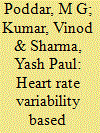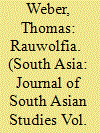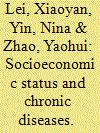|
|
|
Sort Order |
|
|
|
Items / Page
|
|
|
|
|
|
|
| Srl | Item |
| 1 |
ID:
136044


|
|
|
|
|
| Summary/Abstract |
The aim of this study is to analyse and compare the heart rate variability (HRV) of normal and hypertension cases using time domain, frequency domain, and nonlinear methods. For short term HRV analysis, a five-minute electrocardiogram (ECG) of 57 normal and 56 hypertension subjects were recorded with prior verification of their clinical status by a cardiologist. Most time domain features of hypertension cases have clearly reduced values over normal subjects, frequency domain features, like power in different spectral bands, also have the distinguishable decreased values, whereas sympathovagal balance has clear edge over hypertension cases than normal cases. Nonlinear parameters of Poincare plot, approximate entropy and sample entropy, have higher values in normal cases when compared with hypertension cases. Support vector machine-based binary system classifies these two classes with 100 per cent accuracy and 100 per cent sensitivity when all time domain, frequency domain, and nonlinear features were used. It may work as a better predictor for in patients with hypertension.
|
|
|
|
|
|
|
|
|
|
|
|
|
|
|
|
| 2 |
ID:
137807


|
|
|
|
|
| Summary/Abstract |
Volunteering in late life is associated with health benefits such as reduced risk of hypertension, improved self-related health and well-being, delayed physical disability, enhanced cognition, and lower mortality. Although the mechanisms of these correlations are not clear, increases in physical activity, cognitive engagement, and social interactions likely play contributing roles. Volunteers are typically thought to represent a select group, often possessing higher levels of education and income, good health, and strong social networks. However, group evidence indicates that there are many members of groups of lower socioeconomic status (SES), including elderly adults, who serve their communities on a regular basis and in high-priority programs. We propose that the impact of volunteering in an aging population be recognized and invested into, and that effective programs harness social capital of older adults to address critical societal needs and also improve the well-being of older adults. While members of low-SES groups are less likely to volunteer, they exhibit disproportionately great benefits. The Experience Corps represents a model of an effective volunteerism program, in which elders work with young schoolchildren. Existing federal initiatives, in cluding the Foster Grandparent Program and Senior Companion Program – which target low-income elders – have had low participation with long waiting lists. Given the proven benefits and relatively low proportion of older persons who volunteer, enhancement of elder volunteerism presents a significant opportunity for health promotion and deserves consideration as a national public health priority.
|
|
|
|
|
|
|
|
|
|
|
|
|
|
|
|
| 3 |
ID:
162464


|
|
|
|
|
| Summary/Abstract |
Many recent botanical articles on the medicinal plant Rauwolfia serpentina and on its therapeutic uses inform us that Mahatma Gandhi regularly took it because of its tranquilising effects; some go so far as to suggest that his peacefulness (and even the Indian non-violent struggle against the British colonisers) could be attributed to it. However, there is little evidence to support this. Although Gandhi did occasionally take some drops of an infusion made from the plant for his severe hypertension, the sensational claims that Rauwolfia tea was his favourite daily nightcap demonstrate how the results of poor research, where one unsubstantiated source is copied by others with further exaggerations added, can eventually assume the status of ‘fact’.
|
|
|
|
|
|
|
|
|
|
|
|
|
|
|
|
| 4 |
ID:
110253


|
|
|
|
|
| Publication |
2012.
|
| Summary/Abstract |
China has undergone a rapid epidemiological transition from infectious to chronic diseases, a process characterized by widespread under-diagnosis of chronic diseases and low rates of treatment and control. This paper uses hypertension as an example and documents the association of socioeconomic status with various measures of this condition, i.e., prevalence, awareness, treatment and control. We find no wealth and education gradients in the prevalence of hypertension. Given education, wealth plays some roles in improving the treatment and control of hypertension. Some associations exist between education and diagnosis/treatment/control in urban areas but not in rural areas. We also find that the public health care services in China contribute little in informing patients of their hypertension status, suggesting that how to improve the effectiveness of the health care system in dealing with emerging chronic illnesses should be policy priority.
|
|
|
|
|
|
|
|
|
|
|
|
|
|
|
|
|
|
|
|
|